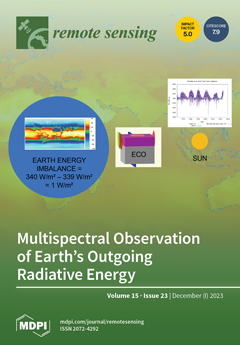Open AccessArticle
Spatio-Temporal Dynamics of Total Suspended Sediments in the Belize Coastal Lagoon
by
Chintan B. Maniyar, Megha Rudresh, Ileana A. Callejas, Katie Osborn, Christine M. Lee, Jennifer Jay, Myles Phillips, Nicole Auil Gomez, Emil A. Cherrington, Robert Griffin, Christine Evans, Andria Rosado, Samir Rosado, Stacey L. Felgate, Claire Evans, Vanesa Martín-Arias and Deepak R. Mishra
Cited by 4 | Viewed by 3088
Abstract
Increased tourism in Belize over the last decade and the growth of the local population have led to coastal development and infrastructure expansion. Land use alteration and anthropogenic activity may change the sediment and nutrient loads in coastal systems, which can negatively affect
[...] Read more.
Increased tourism in Belize over the last decade and the growth of the local population have led to coastal development and infrastructure expansion. Land use alteration and anthropogenic activity may change the sediment and nutrient loads in coastal systems, which can negatively affect ecosystems via mechanisms such as reducing photosynthetically active radiation fields, smothering sessile habitats, and stimulating eutrophication events. Accurate monitoring and prediction of water quality parameters such as Total Suspended Sediments (TSS), are essential in order to understand the influence of land-based changes, climate, and human activities on the coastal systems and devise strategies to mitigate negative impacts. This study implements machine learning algorithms such as Random Forests (RF), Extreme Gradient Boosting (XGB), and Deep Neural Networks (DNN) to estimate TSS using Sentinel-2 reflectance data in the Belize Coastal Lagoon (BCL) and validates the results using TSS data collected in situ. DNN performed the best and estimated TSS with a testing R
2 of 0.89. Time-series analysis was also performed on the BCL’s TSS trends using Bayesian Changepoint Detection (BCD) methods to flag anomalously high TSS spatio-temporally, which may be caused by dredging events. Having such a framework can ease the near-real-time monitoring of water quality in Belize, help track the TSS dynamics for anomalies, and aid in meeting and maintaining the sustainable goals for Belize.
Full article
►▼
Show Figures





